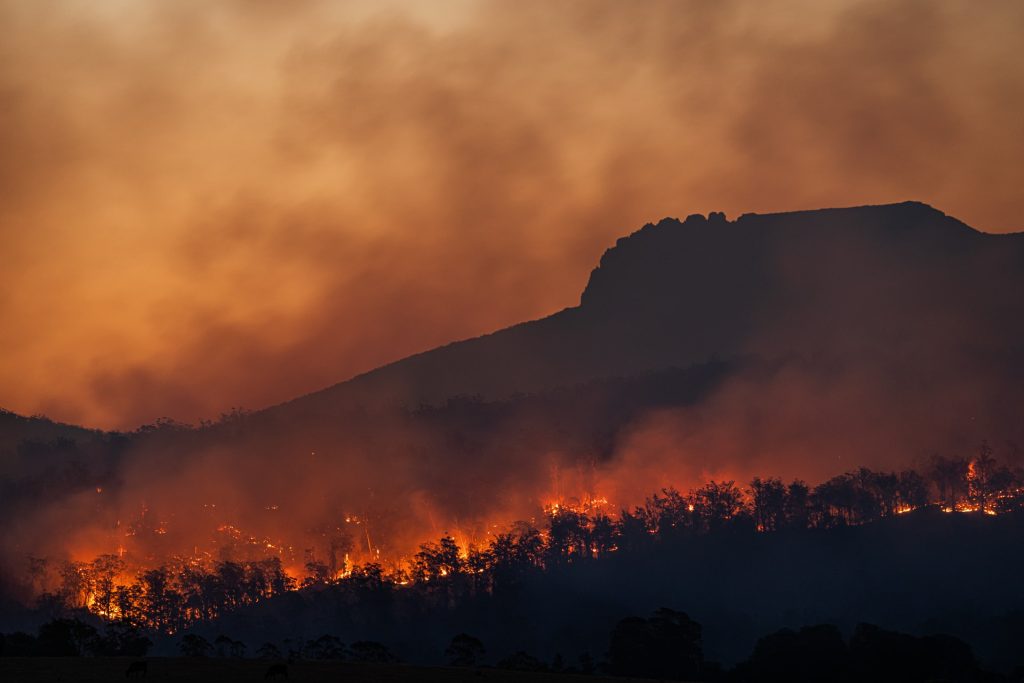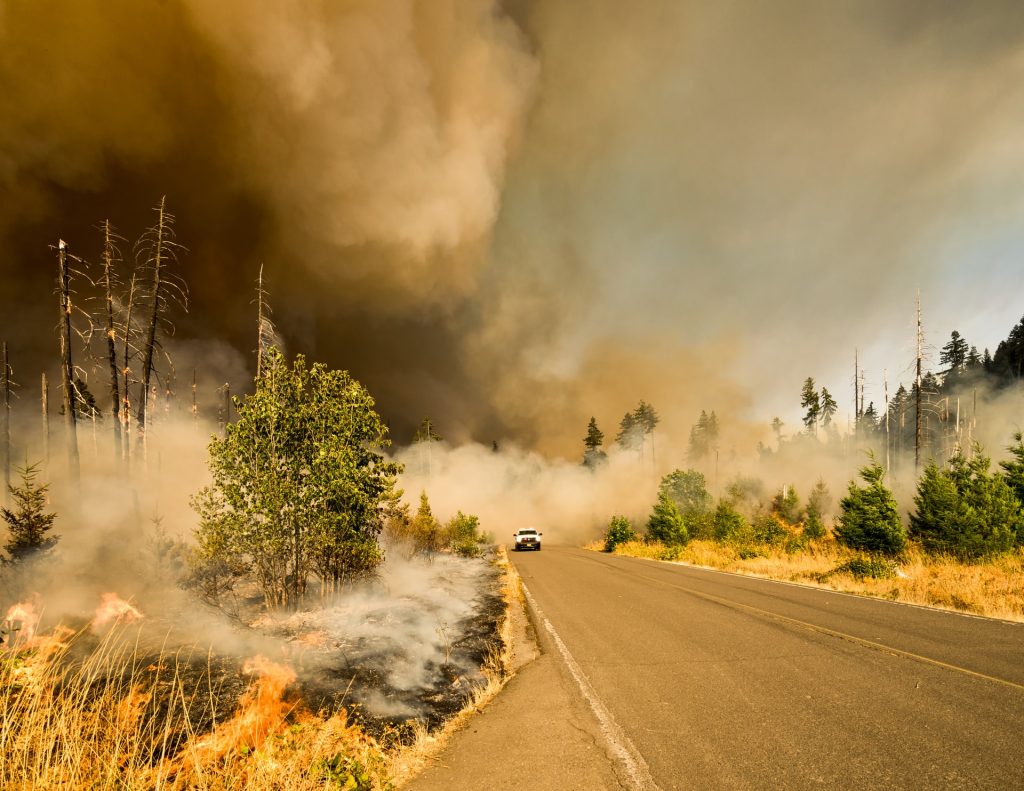Forest Fires: UN report 2022 warns of danger

Together with GRID-Arendal, the UN Environment Programme UNEP published the latest figures on forest fire danger. According to these figures, forest fires are expectedly increasing by 50 percent by the end of the century.
Billboard
Skyscrapper
Halfpage
Together with GRID-Arendal, a non-profit environmental communication centre based in Norway, the UN Environment Programme UNEP published the latest figures on forest fire danger. According to these figures, forest fires are expectedly increasing by 50 percent by the end of the century. Read more here.
The new report „Spreading like Wildfire: The Rising Threat of Extraordinary Landscape Fires” by the United Nation’s Environment Programme (UNEP) and the Norwegian non-profit environmental communications centre GRID-Arendal, estimates that the risk of highly devastating fires could increase by up to 57 percent by 2100. This is mostly due to climate change, according to the more than 50 researchers from six continents responsible for the report. Changes in land use are another factor that contributes strongly to an increased wildfire risk.
Higher risk of forest fires almost everywhere in the world
Even the Arctic and other regions previously unaffected by wildfires will face higher risks in the year to come. Only a few areas, mostly on the African continent, have a decreased risk of forest fires. The authors call for a radical change in government response to wildfire preparedness, focusing on prevention.
The report came out just a few days before the IPCC’s second instalment of the Sixth Assessment Report on Climate Change. It also calls for urgent action from governments and other stakeholders. Both reports acknowledge that the effects of climate change do often not distribute equally. They tend to hit the most vulnerable populations and ecosystems.
Record-breaking fires will become normal
Wildfires are uncontrolled fires burning in wildland vegetations. In the past years, the world has already seen record-breaking wildfire seasons in Australia, Greece, and South America. With global temperatures rising, the need to reduce risk for these fires, which are often devastating to ecosystems, flora, fauna, and human settlements, must be addressed.
The UNEP report points out that by 2050, the danger for wildfires is already likely to increase by a third. More and more uncontrollable blazes will hit even areas such as the Arctic. These areas are not equipped to handle uncontrolled forest fires of this magnitude.
Uncontrolled forest fires disproportionately affect the poorest nations, endangered species and precious ecosystems like heath landscapes. Their impacts last long after the flames subside, leaving devastation in their wake. This means that wild, forest and bush fires impede progress towards sustainable development and often deepen existing social inequalities.
These are some of the impacts that forest fires create:
- Respiratory and cardiovascular risks to the health
- Expensive and unaffordable cost of rebuilding
- They push Animal and plant species closer to extinction
- Death of countless domesticated and wild animals
- Degradation of watersheds through wildfire pollutants
- Soil erosion causing problems for waterways
- Contaminated wastes

Governments in need for better financial support
The report by UNEP and GRID-Arendal says that money is often being put in the wrong place. Emergency service workers and firefighters on the frontlines need better support, especially considering that they often risk their lives. They also require better equipment and training of more staff.
But, most importantly, governments must work to minimise the risk of extreme wildfires: “Invest more in fire risk reduction, work with local communities, and strengthen global commitment to fight climate change,” said Inger Andersen, UNEP Executive Director.
The publication calls on governments to adopt a “Fire Ready Formula”, which consists of two-thirds of spending devoted to planning, prevention, preparedness, and recovery. Response will take one third of the budget. At the moment, response take up over half of wildfire-related expenditures, with planning receiving less than 1 percent.
A combination of data and science-based monitoring systems, indigenous knowledge and stronger regional and international cooperation will help to prevent fires, according to the authors.
Apart from stronger international standards for the safety and health of firefighters and minimising their risks, the report also calls for awareness-raising on topics such as smoke inhalation, entrapments, hydration, nutrition, rest, and recovery between shifts for firefighters.
Forest fires and climate change
The report says that wildfires and climate change are “mutually exacerbating”. At the same time, scientists still struggle to fully understand the behaviour of wildfires. A sustainable fire management requires a legal framework and incentives that encourage appropriate land and fire use.
Climate change events such as droughts and changing wind phenomena often cause or at least exacerbate forest fires. The fires take away important carbon storages such as peatlands and rainforests, increasing the risk for future wildfires.
UNEP explained that climate change make wildfires worse, while wildfires also make climate change worse. Too many landscapes are turning into tinderboxes, which makes it almost impossible to halt rising temperatures.
Scientists point out that while the situation is “certainly extreme, it is not yet hopeless”. Natural solutions to stopping forest fires include controlled burning, managing landscapes with grazing animals that reduce the flammable material, and removing trees close to people’s homes. Indigenous knowledge on controlled fires, such as traditional landscape-burning in Africa, is key to understand how to support the ecosystem and find an adequate solution for different regions.
The UN Decade on Ecosystem Restoration
Between 2021 and 2030, the UN Decade on Ecosystem Restoration takes place. This is a rallying call for the protection and revival of ecosystems all over the world to benefit people and nature. Together with the United Nations General Assembly and the Food and Agriculture Organisation, UNEP is building a global movement to improve ecosystem restoration.
The recent report on wildfires is part of these efforts. It details how ecosystems can be protected and restored after a forest fire. In the end, fire is something crucial for the planet that needs to be managed in the appropriate manner – especially in times of climate change.
You might also find this article about wildfires in California interesting.












